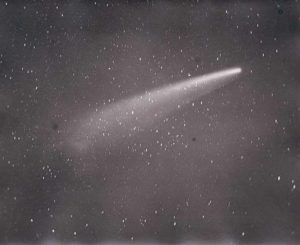 Our solar system may be playing host to one of our neighbors, because on Wednesday, October 18, 2017, a sky-surveying telescope located in Hawaii observed what scientists believe may be the first comet ever found to originate in interstellar space.
Our solar system may be playing host to one of our neighbors, because on Wednesday, October 18, 2017, a sky-surveying telescope located in Hawaii observed what scientists believe may be the first comet ever found to originate in interstellar space.
The object, which has been dubbed C/2017 U1, was first observed when it passed closest to the sun, and has been spotted 34 times since.
What makes C/2017 U1 notable is that it was not moving in the elliptical orbit that most comets follow around the sun, coming in from the Oort Cloud and then returning; rather, this one flew in from the direction of the constellation Lyra, flying slightly higher than the usual, relatively flat plane of our galaxy, and took a U-turn around the sun before flying off into the universe. Scientists believe it will liekly never return again.
Researchers can tell that this comet is not acting the way that the others in our solar system usually do, but they cannot say for sure that it came from beyond it. There are other potential causes of its extreme path.
“It could have interacted with Jupiter or another planet in such a way that changed its orbit,” explained Maria Womack, from the University of South Florida in Tampa.
She added that comets are difficult to track in general, because most of what we see of them in telescopes is not the actual object at their center, and individual observers have to make a lot of guesswork about them. Many observations of this object by many different people will be needed before researchers feel safe settling on any sort of consensus.
However, according to Luke Dones, a researcher at the Southwest Research Institute in Boulder, Colorado, the fact that the comet was coming from the direction of Lyra is significant, because the sun is moving toward Lyra as it travels through our galaxy.
“That’s exactly what you’d expect,” he explained. “There should be more interstellar comets coming from the direction the sun is heading toward,” like two cars passing by as they travel in opposite directions.
The comet is expected to be visible for the next few weeks, which will allow both professional and amateur astronomers to see it and make some observations. Hopefully we will be able to determine soon whether this was a local or something a bit more exotic in our midst.





